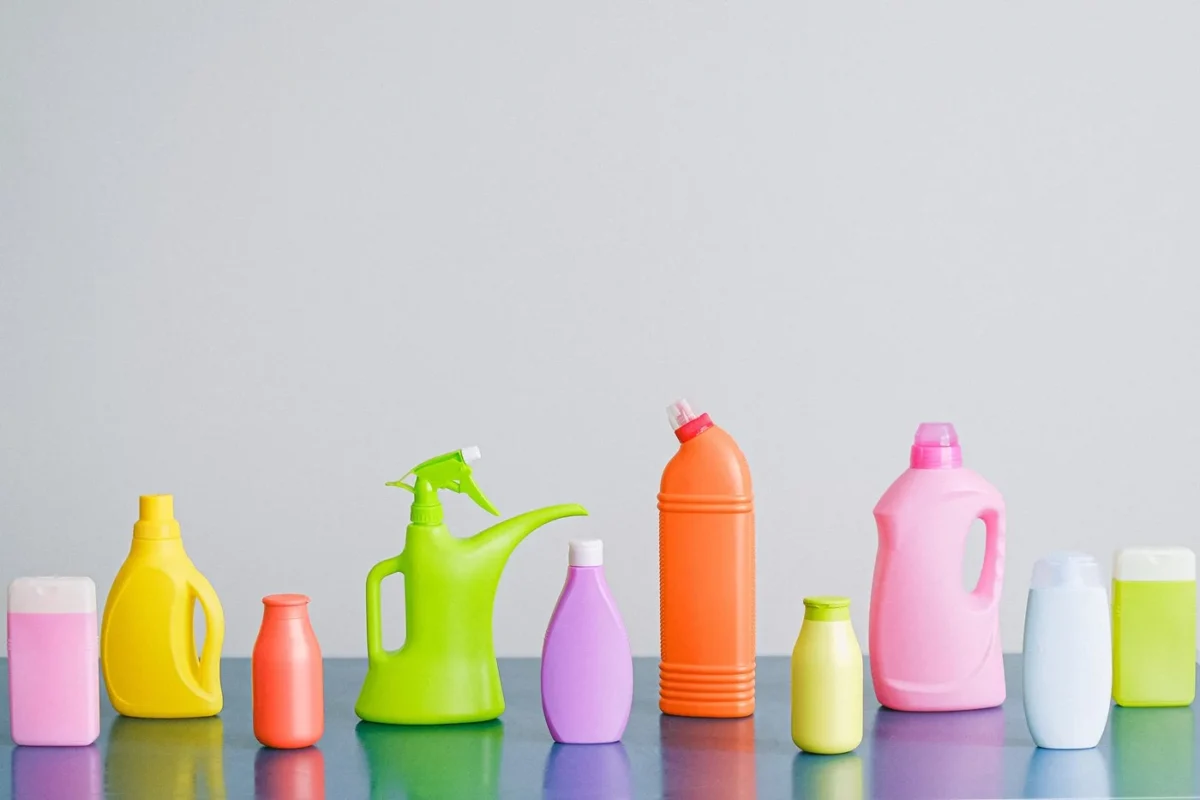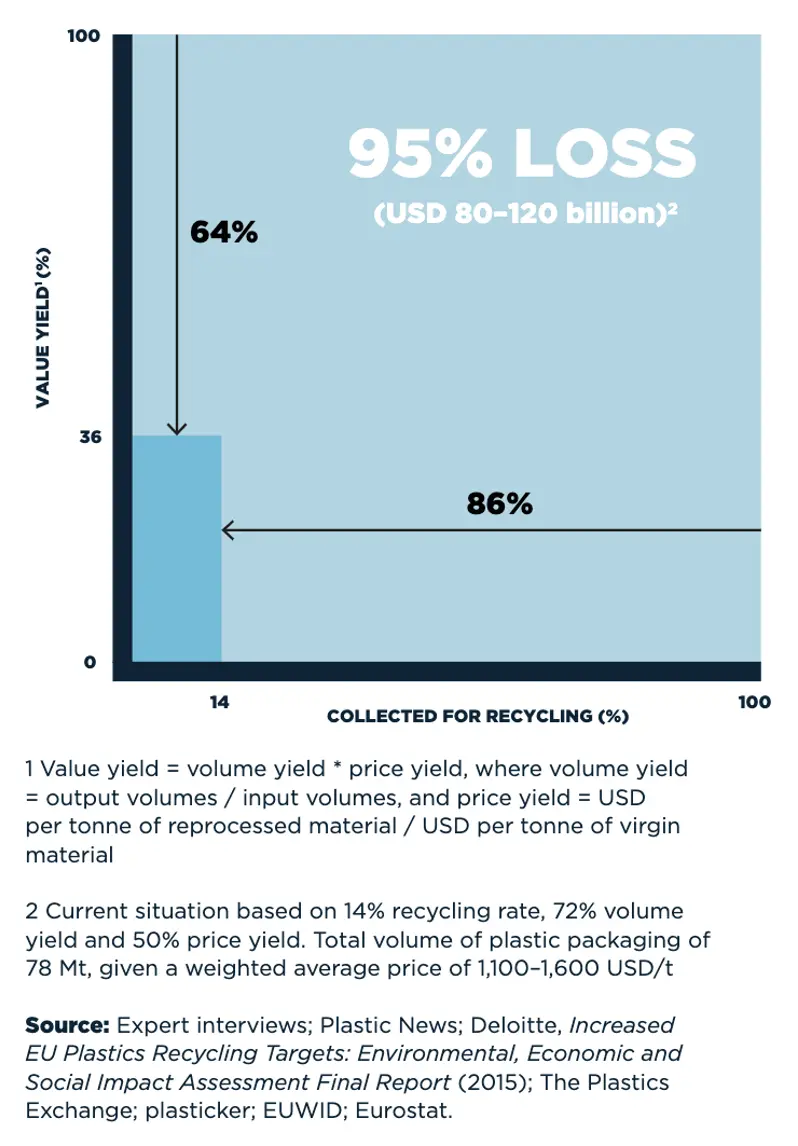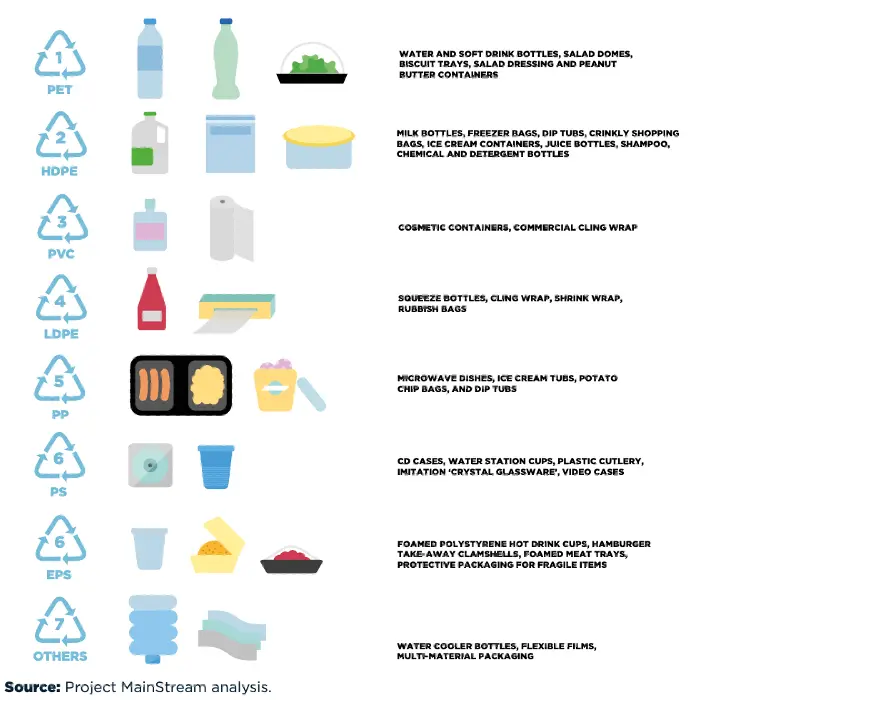
Single-use plastics make up 40% of the plastic produced globally. Packaging, as the largest application of plastics covering 26% of the total volume, falls into the single-use plastics category. After a short initial use cycle, 95% of the value of plastic packaging materials, or $80-120 billion annually, is lost to the economy. According to UNEP, only 10% of plastic packaging has ever been recycled. Factoring in sorting and reprocessing losses, recycling retains only 5% of material value for subsequent use, and most recycling is actually ‘downcycled’ into lower-value applications that cannot be recycled again.
Apart from the economic inefficiencies related to the use of plastics, its externalities can be categorised under 3 main areas: greenhouse gas emissions from production and after-use incineration; degradation of natural systems due to leakage; and health and environmental impacts from substances of concern.

FIGURE 1: PLASTIC PACKAGING MATERIAL VALUE LOSS AFTER ONE USE CYCLE
Greenhouse gas (GHG) emissions
Plastics manufacturing accounts for 6% of global oil production. Most of the GHG emissions associated with plastics arises in the production phase, which consumes half of the fossil inputs of the plastics industry. The remaining GHG emissions are captured in the plastic products, and their release depends on the products’ post-consumption pathway. The carbon is considered sequestered when the plastics are properly landfilled; but released when they are incinerated for energy recovery or when they are leaked. As these are calculated under Scope 3 emissions, companies wishing to reduce their carbon footprint should consider the disposal of the plastics they use in their operations and products.

FIGURE 2: GLOBAL FLOWS OF PLASTIC PACKAGING MATERIALS IN 2013
Degradation of natural systems due to leakage
At least 8 million tonnes of plastics leak into the ocean every year. This is the equivalent of one garbage truck full of plastics dumping its contents into our oceans every minute. The majority share of the plastics entering our oceans consists of packaging, which is especially prone to leakage due to its small size and low value. According to The Ocean Conservancy, plastic packaging makes up more than 62% of all items (plastic or non-plastic) collected in international coastal clean-up activities. It is estimated that there are 150 million tonnes of plastic waste in the oceans today.
While the exact numbers are unclear, the total economic impact of ocean plastics on maritime natural capital is estimated to be at least in the billions of dollars across many economic industries. According to UNEP, plastics cause marine ecosystems more than $13 billion worth of harm per year.4 The cost of ocean plastics to the shipping, tourism and fishing industries is estimated to be $ 1.3 billion in the Asia Pacific region alone, while just the cost of coastal clean-ups in Europe could be as much as $695 million per year.5
Beyond the economic costs, leaked plastics also have harmful effects on human livelihoods and health, food chains and many other essential economic and societal systems. Businesses will be affected as their raw material inputs as well as their manufacturing and operating processes will be impacted by the plastic waste degrading natural systems such as waterways, forests, and the soil, and increasing costs by clogging sewers and other urban infrastructure.
Substances of concern
Plastics are manufactured by mixing polymers with a complex blend of additives like plasticisers, pigments, stabilisers, and may contain unintentional substances such as contaminants and impurities. The health and environmental risks of some substances such as bisphenol A (BPA) and some phthalates used as plasticisers in PVC plastic have been long proven. The potential consequences of long-term exposure to today’s plastics, and the combined effects of these synthetic substances on human health and on the biosphere after leakage are uncertain. The 150 million tonnes of plastics currently in the ocean include roughly 23 million tonnes of additives, of which some are certainly cause for concern.

FIGURE 3: MAIN PLASTIC RESIN TYPES AND THEIR APPLICATIONS IN PACKAGING
What can your business do this Plastic Free July?
Here at Digitopia, we are very passionate about helping businesses shape their effective, efficient, and long-lasting futures. In the process of measuring your sustainability maturity, we can help you explore healthier materials and more sustainable strategies that will create higher demand for your products and services while enabling cost savings in the long run for far-sighted companies.
Together, we can examine both the material inputs of your business to manage your impact, as well as determine the risks you face due to impacted ecosystems and resources such as oceans, forests, and urban infrastructure. Whether you are a heavy industry manufacturer or a financial institution, our Sustainability Maturity Index (SMI) provides high-level initiatives, roadmaps, and consulting services for your sustainability journey. If you are observing this Plastic Free July or are interested in furthering your sustainability, get in touch.

